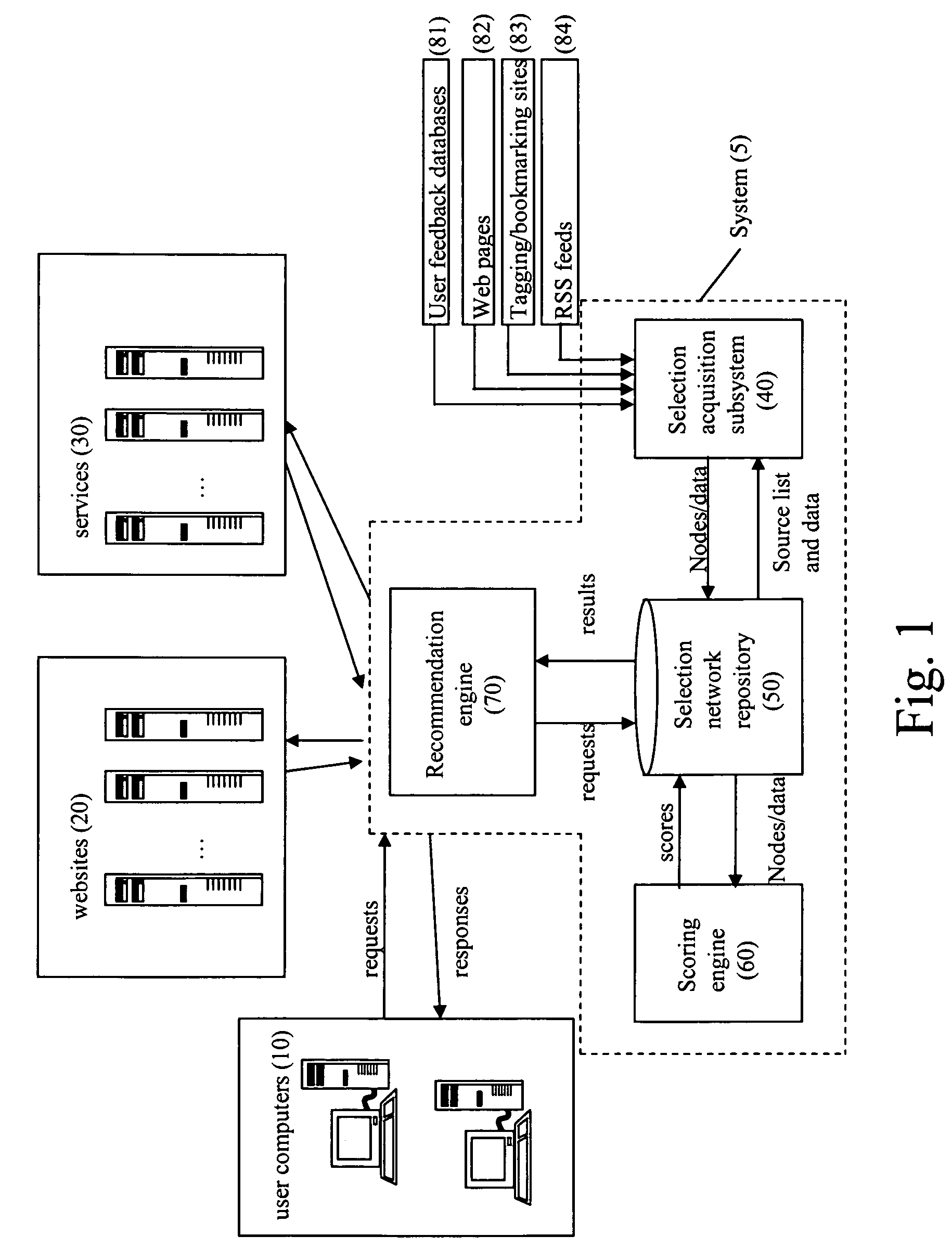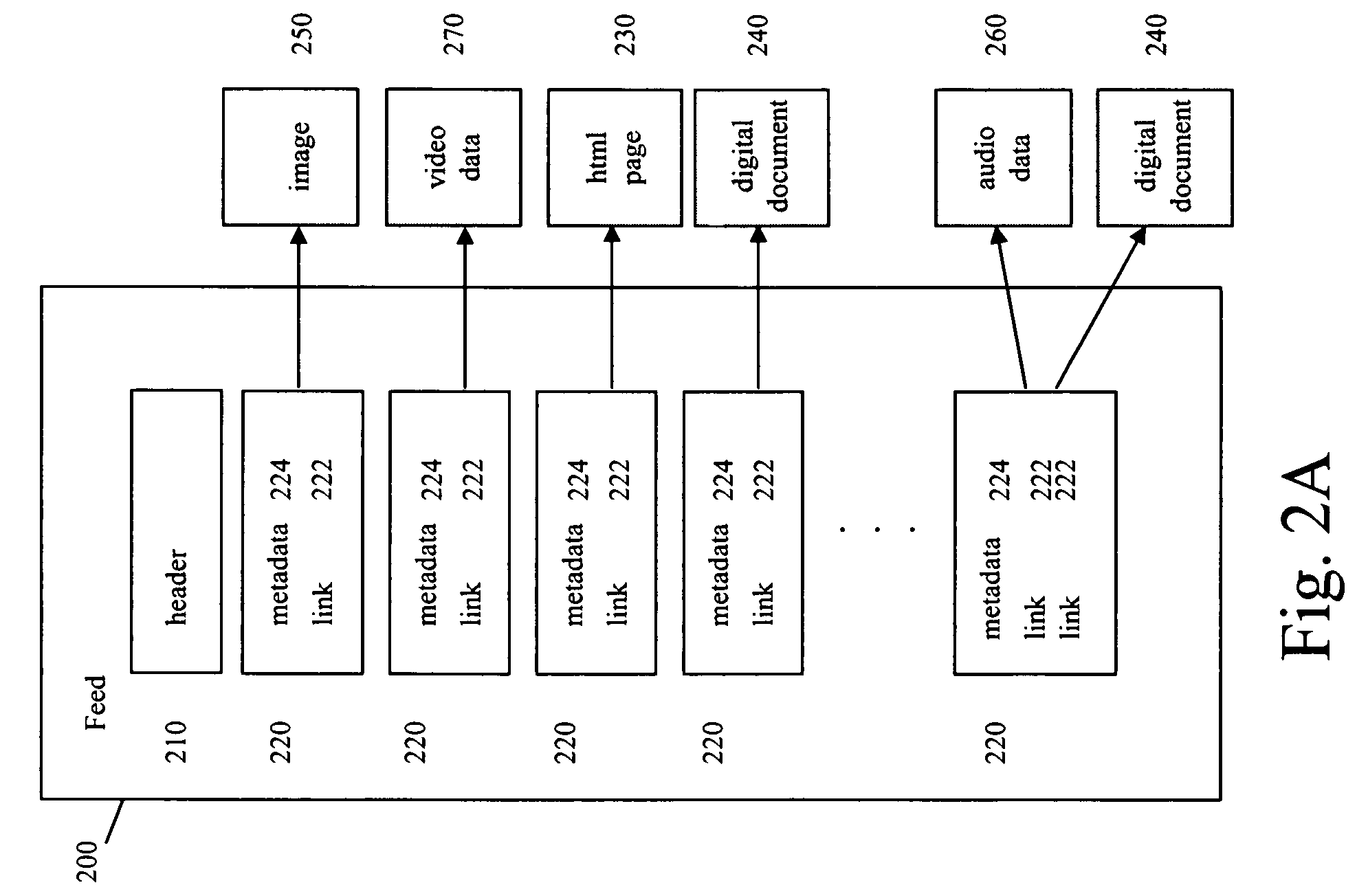System and method for indexing a network of interrelated elements
a network and interrelated element technology, applied in the field of system and method for indexing a network of interrelated elements, can solve the problems of inability of any given set of individuals to maintain comprehensive and up-to-date indices, overwhelming information overload on the web, and inability to timely or brand new content work well
- Summary
- Abstract
- Description
- Claims
- Application Information
AI Technical Summary
Benefits of technology
Problems solved by technology
Method used
Image
Examples
Embodiment Construction
[0029]The system generates sets of selections of content that may be provided to users, websites, services, or other consumers of such selections as described below. FIG. 1 illustrates a logical diagram of an embodiment of the system. As shown in FIG. 1, users, operating user computers (10), websites (20), and other services (30) such as email listserves or other content distribution services may interact with the system (5) to receive selections of content provided by the system (5). According to a preferred embodiment, the system (5) includes a selection acquisition subsystem (40) that acquires selections of content and makes them available to the system, a selection network repository (50), that receives and stores the selections, information about the selections, and configuration information used in the operation of the system (5), a scoring engine (60) that assigns scores to sources of content and selections based on customizable criteria, and a recommendation engine (70) that...
PUM
 Login to View More
Login to View More Abstract
Description
Claims
Application Information
 Login to View More
Login to View More - R&D
- Intellectual Property
- Life Sciences
- Materials
- Tech Scout
- Unparalleled Data Quality
- Higher Quality Content
- 60% Fewer Hallucinations
Browse by: Latest US Patents, China's latest patents, Technical Efficacy Thesaurus, Application Domain, Technology Topic, Popular Technical Reports.
© 2025 PatSnap. All rights reserved.Legal|Privacy policy|Modern Slavery Act Transparency Statement|Sitemap|About US| Contact US: help@patsnap.com



